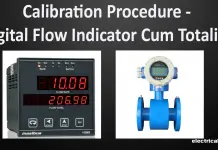What is fuse?
Fuse is the self-destructive protection device which is widely used in the electrical and electronic circuit. There are different types of fuses available in the market and they are cartridge fuses, automotive fuses, resettable fuses/polyfuse, semiconductor fuses, overvoltage suppression, high voltage fuses, Rewireable fuses, Striker fuse, Switch fuse, HRC (High Rupture Current) fuses etc.
Fuse rating calculation is an important factor of the electrical system designing and installation. Also, if you are looking finding the the exact status of your electrical installation, then you can get the Electrical Installation Condition Report quote from the Energy North Ltd.
Some Fuse terminology to be remembered:
- Fuse sizing: Nearest size available with respect to rating
- Fuse rating: Exact duty of the fuse.
Motor Fuse sizing calculation:
For continuous running, The Motor fuse rating is equal to 1250 times of motor real power P(kW) in kilowatts divided by the product of the applied voltage V(V) in Volts and Power factor. Hence motor fuse rating formula,
For single-phase:
Motor fuse rating = PkW x 1.25 / (pf x V(V))
In other words, the fuse rating is equal to 1.25 times the full load current.
For Three-phase:
Motor fuse rating = PkW x 1250 / (1.732 x power factor x V(V-L))
V(V-L) = Line to Line Voltage in volts.
For continuous operation, the fuse rating is less than the 125% is not recommended since all the motor is designed to run 120% of the full load rating. The under-capacity may lead to repeated tripping or interruption of the operation.
Sometime, for high starting current application, we shall increase the fuse rating to 1.5 times of the full load current.
However, any fuse sizing should compile type 2 co-coordination, (The equipment should not register any physical damage in either equipment side or stator equipment side. The equipment shall start immediately after tripping)
But for electronics loads such as circuits, electronics transformer, small motors, the fuse sizing will be the 1.1 times of the full load current or 1.1 times of the total power in watts P(W) is divided by the applied voltage V(V). Fuse rating formula for electronics circuit,
Fuse rating for electronics circuit = 1.10 x PW / x V(V)
Fuse standard Sizing:
We cannot size exact resultant rating of the fuse from the above formula. Instead, we can choose nearest available standard fuse size. They are 1, 2, 3, 4, 6, 10, 16, 32, 40, 63, 125, 150, 160, 200, 250, 315, 355, 450, 500, 560, 630, 710, 800, 1000, 1250, 1600, 2000, 2500, 3200, 4000, 5000, and 6000 amperes.
Also, note that the fuse size can be designed at any Amps rating which is depending on the manufacturer. i.e if you need 900A rated fuse means, they can design.
Fuse rating Calculation:
Let we calculate the fuse sizing for 5.5kW 415V three-phase induction motor is planned to run at 0.86 power factor.
Fuse rating = 1250 x 5.5 / (1.732 x 415 x 0.86) = 11.1 A
Hence, we can choose 16A Fuse for 5.5kW motor.
Motor Fuse Sizing Chart:
Here the standard IEC recommended fuse chart has been included. But you can change the rated as per your load demand.
| Motor Fuse Sizing | ||
| Rating Motor | Standard Sizing | |
| kW | A | A |
| 0.25 | 0.8 | 4 |
| 0.37 | 1.1 | 4 |
| 0.55 | 1.5 | 6 |
| 0.75 | 2 | 6 |
| 1.1 | 3 0 | 10 |
| 1.5 | 3.6 | 16 |
| 2.2 | 5 | 16 |
| 3 | 6.5 | 20 |
| 4 | 8.4 | 20 |
| 5.5 | 11 | 25 |
| 7.5 | 15 | 40 |
| 11 | 20 | 50 |
| 15 | 27 | 63 |
| 18.5 | 33 | 80 |
| 22 | 38 | 80 |
| 30 | 54 | 100 |
| 37 | 66 | 125 |
| 45 | 79 | 160 |
| 55 | 98 | 160 |
| 75 | 135 | 250 |
| 90 | 155 | 250 |
| 110 | 185 | 315 |
| 132 | 220 | 355 |
| 150 | 250 | 355 |
| 185 | 310 | 450 |
| 200 | 335 | 500 |
| 225 | 375 | 560 |
| 250 | 415 | 560 |
| 280 | 460 | 630 |
| 335 | 562 | 710 |
| 355 | 596 | 800 |
Fuse rating For Transformer:
For the transformer, the fuse rating is equal to the two times of the full load current.
Fuse rating in Amps = 2 x Full load current
or in other words.,
The transformer fuse rating is equal to 2000 times of total apparent power S(kVA) in kilovolts amp divided by the voltage V(V) in Volts. Hence transformer fuse rating calculation formula will be,
For single-phase:
Transformer fuse rating = 2000 x S(kVA) / V(V)
For Three-phase transformer,
Transformer fuse rating = 2000 x S(kVA) / (1.732 x V(V-L))
Example:
Calculate the fuse sizing of the 250kVA, 415 V three-phase transformer.
Fuse rating = 2000 x 250 / 1.732 x 415 = 696 Amps
Hence the nearest available size of the fuse is 710Amps.
Therefore, 250kVA transformer can be charged with the 710A fuse.
Fuse sizing for Lighting Circuits:
For the lighting circuit, the fuse current rating should be minimum 2 times the full load current of the total number of lighting.
For individual circuit, the fuse rating should be 1.5 times of the full load current.
For example, let we calculate fuse rating for a 230 V, 0.8 pf light panel and individual circuits and which contains 10 number of 400A mercury vapour lighting.
Fuse rating for Panel:
Total connected load = 10 x 400 W = 4000 W
Hence the full load current = 4000 / (230*0.8) = 22A
Fuse rating = 2 x FLA = 2 x 22A = 44A
Hence the fuse standard rating for the panel should be 40A.
Fuse rating for Individual Lighting Circuits:
Full load current for 400W lamp = 400 / (230 x 0.8) = 2.1
Fuse rating = 2 x 2.1 = 4.2A
Hence the fuse standard rating for the individual lamp should be 4A.
Fuse rating for Capacitor Circuits
For the capacitor circuit, the fuse rating is equal to 1.5 times of the full load reactive current by considering staring inrush current, circuit harmonics and capacitor tolerances. The formula will be
Capacitor Fuse rating = 1.5 x Capacitor Full load current
Or
Capacitor Fuse rating = 1.5 x Q(VAR) / (1.732 x V(V))





![What is Normally Open & What is Normally Closed [Video Included] What is NO and NC](https://www.electrical4u.net/wp-content/uploads/2020/09/What-is-NO-and-NC-218x150.png)





👌